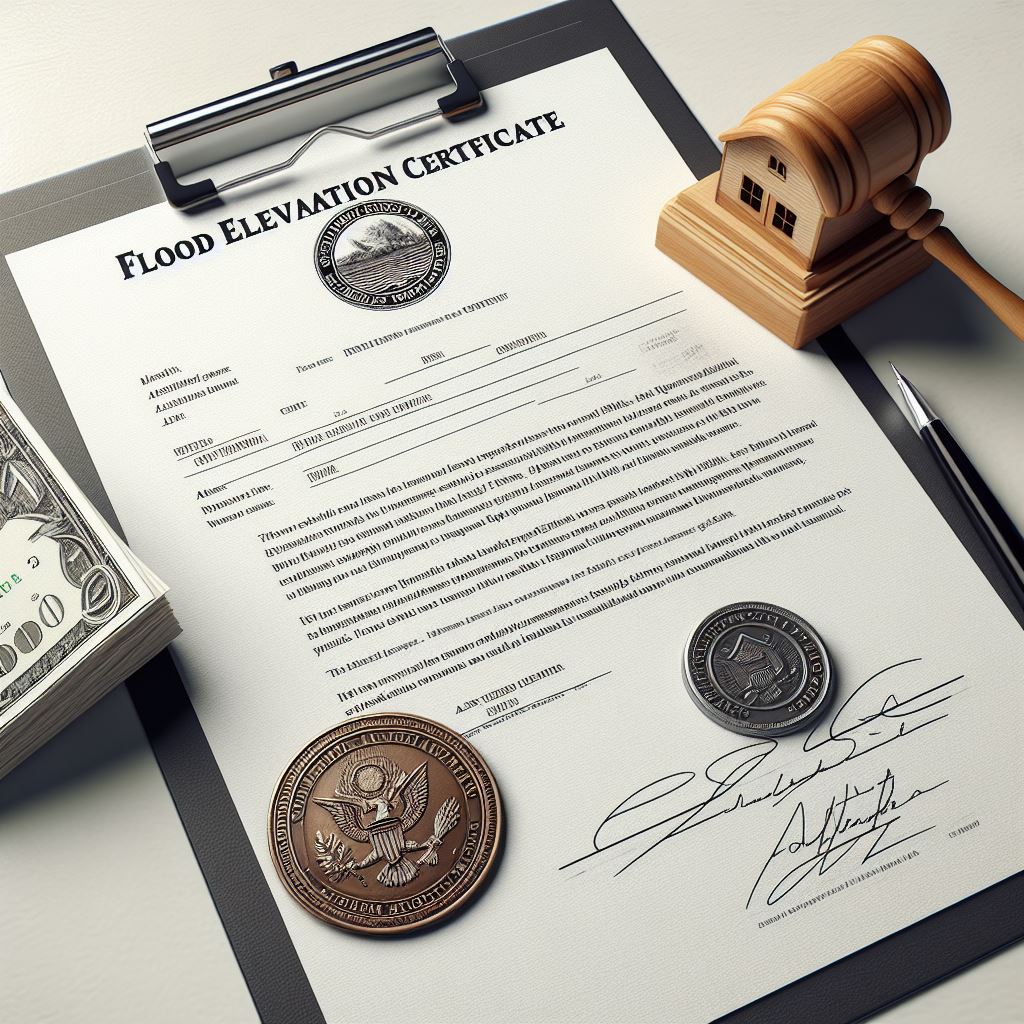Many property owners, especially those in flood-prone areas, find flood insurance and building regulations confusing.
A flood elevation certificate (EC) is essential. It tells you about your flood risk and might lower your flood insurance costs.
This article will explain flood elevation certificates in detail. It covers their purpose, why you need them, how to get one, their cost, how long it takes to process, and their benefits.
Flood Elevation CertificateWhat is a Flood Elevation Certificate?
Why Do You Need a Flood Elevation Certificate?
You might need a flood elevation certificate for two main reasons:
Lower Flood Insurance Costs
An EC can help reduce your flood insurance premium. If it shows your property’s lowest floor is higher than the expected flood level, your flood insurance provider might give you a discount.
Since flood insurance rates depend on your property’s flood risk, proving a lower risk with an EC can save you money.
Building Compliance in High-Risk Flood Zones
If your property is in a Special Flood Hazard Area (SFHA), marked as a high-risk flood zone on FEMA maps, you might need an EC before making major renovations or construction.
Local building rules may demand an EC to ensure new structures or changes meet flood safety standards by being at the right elevation.
A Step-by-Step Guide to Obtaining FEC
To get a flood elevation certificate, follow these steps:
- Contact Your Local Floodplain Manager: Find your local floodplain manager. Every community in the National Flood Insurance Program (NFIP) has one. You can usually get their contact details from your city or town government office. Ask for the department in charge of floodplains or flood insurance.
- Check for Existing Certificates: Before getting a new EC, ask your local floodplain manager if there’s already one for your property. Previous owners might have gotten one, which could save you time and money.
- Hire a Licensed Surveyor: If there’s no existing EC, hire a licensed surveyor. They’ll come to your property and measure the elevation of its lowest floor compared to the reference point. Then, they’ll fill out the official EC form (FEMA Form FF-206-FY-22-152).
- Submit the Completed EC: After the surveyor finishes, submit the EC to your local floodplain manager’s office. They’ll check the surveyor’s qualifications and make sure the EC matches their records.
Cost and Processing Time of Flood Elevation Certificates
The cost of obtaining a flood elevation certificate can vary depending on your location, the complexity of the property, and the surveyor’s fees.
Generally, expect to pay anywhere between $300 and $1000 for an EC.
The processing time can also vary, but typically it takes 2-4 weeks for the surveyor to complete the measurements and finalize the EC.
It is followed by an additional 1-2 weeks to be reviewed and approved by the local floodplain manager’s office.
Advantages of Having a Flood Elevation Certificate
Despite the initial cost and processing time, possessing a flood elevation certificate offers several significant advantages, including:
-
Reduced Flood Insurance Premiums: As previously mentioned, an EC can potentially lead to substantial savings on your flood insurance by demonstrating a lower flood risk for your property. The cost savings over the life of your flood insurance policy can significantly outweigh the initial cost of obtaining the EC.
-
Peace of Mind: Knowing the precise flood risk associated with your property provides valuable peace of mind. An EC allows you to make informed decisions about flood preparedness and mitigation measures, potentially reducing potential flood damage.
-
Improved Marketability: For properties located in flood zones, having a readily available EC can make the property more attractive to potential buyers. The documented lower flood risk can ease buyer concerns and potentially expedite the sale process.
